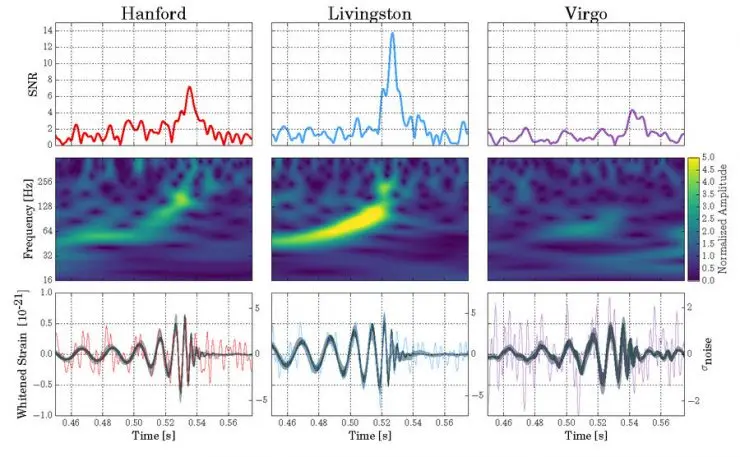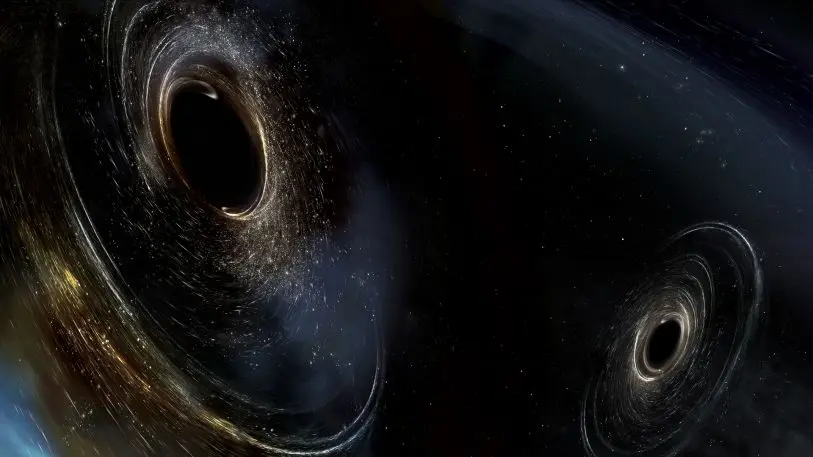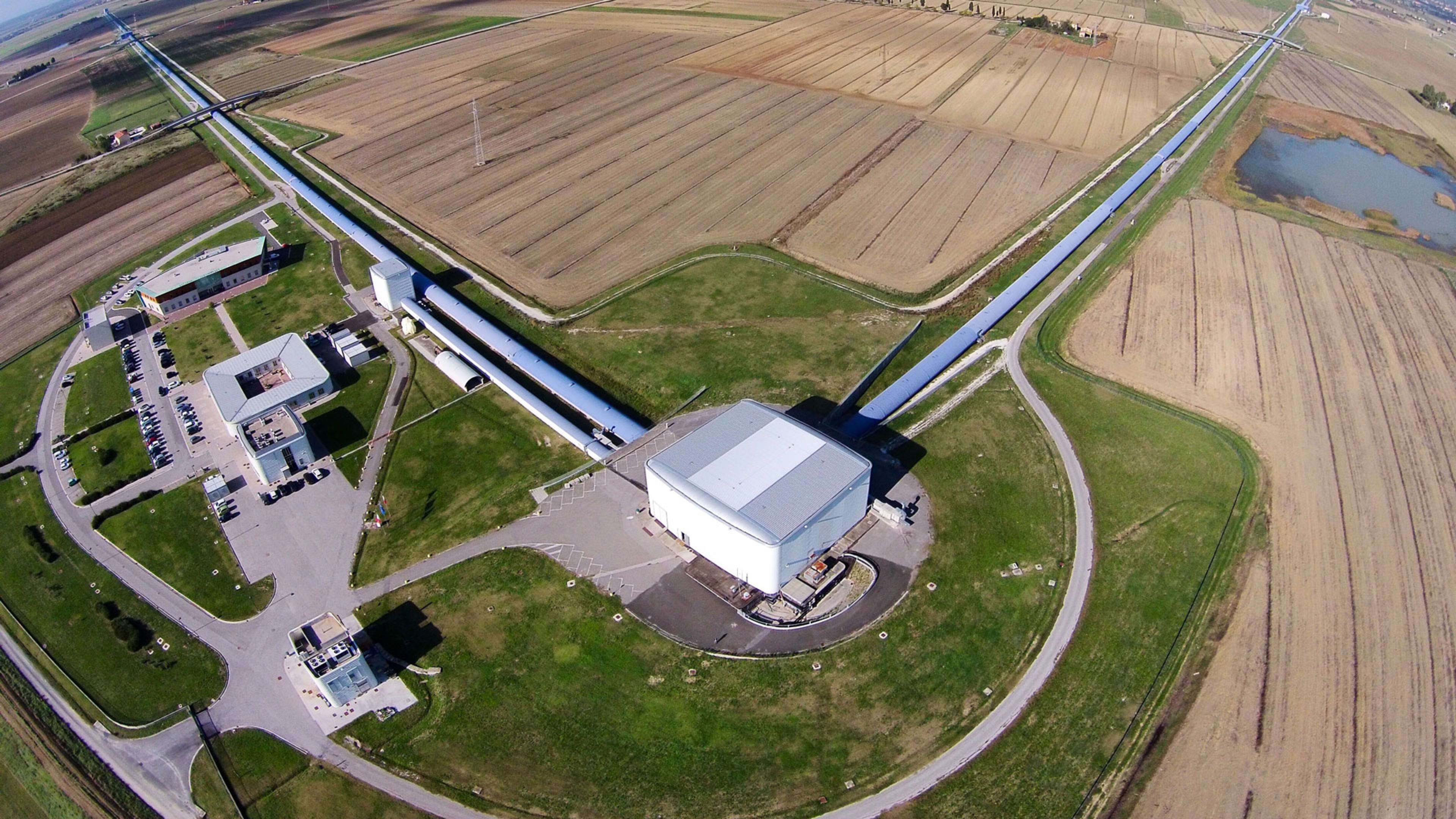From Star Trek to Family Guy, storylines based on ripples in the spacetime continuum theorized by Albert Einstein abound. Well, three U.S. scientists just won the Nobel Prize for Physics proving him right.
The three octogenarians headed a massive crowdsource effort that simultaneously proved Einstein right—and wrong. In his General Theory of Relativity, he posited way back in 1915 that space and time are not constants, and that in the presence of energy and mass, like that of a black hole, they become malleable.
Einstein also said that those ever-so-slight ripples could never be measured. That’s where the father of modern physics was wrong.
The Nobel Prize-winning physicists—California Institute of Technology professors Barry Barish, 81, and Kip Thorne, 77, and Massachusetts Institute of Technology professor Rainer Weiss, 85—organized a massive collaborative effort that, after decades, measured the waves produced by two massive black holes that collided more than 1 billion years ago.
Along with more than 1,000 other researchers, students, and staff involved with the Laser Interferometer Gravitational-Wave Observatory (LIGO) used cutting-edge physics and engineering techniques to detect the waves. More precisely, they measured the infinitesimal distortions the waves caused on pairs of massive mirrors by tracking a laser beam bouncing between them.
“We use the laser beam as basically a ruler,” says Peter Shawhan, a physics professor at the University of Maryland who is involved with LIGO. “We’re measuring the distance between pairs of mirrors by bouncing the laser beams back and forth.”
The Nobel Prize committee said of the work: “The wave’s form was exactly as predicted, and it was not a test. Everything fit perfectly. The pioneers…and their LIGO colleagues were finally able to hear the music of their dreams, like a glissando, or a bird chirping its solitary song. It was almost too good to be true.”
The observations were made in 2015, after a set of upgrades to the LIGO observatories in Hanford, Washington, and Livingston, Louisiana, first came online. Not only had gravitational waves never been detected before, scientists had previously been unaware of the two black holes generating these vibrations, says Shawhan.
Part of his role is coordinating with other space researchers so they can direct their own instruments where LIGO picks up interesting readings.

For instance, he says, it was long assumed that heavy metals like gold and platinum were forged in the intense energy of supernovas, but it’s now believed that some might be produced by interactions between the ultra-dense objects called neutron stars.
“It may be that much or most of the gold we have here on Earth is really from binary neutron star collisions, not from supernovas as was assumed for a long time,” Shawhan says. And those collisions can be detected through gravitational waves.
And to Harry Collins, a sociologist at Cardiff University who has studied the search for gravitational waves since 1972, part of the benefit to humanity is to reinforce scientific integrity.

“Perseverance, honesty, never saying you’ve got something when you haven’t got it,” Collins says. “People criticizing each other inside the team. Making sure nobody ever said anything that wasn’t true. [They] kept doing an experiment that was almost impossible, despite an extraordinary amount of external criticism.”
Their success reinforces the merits of scientific expertise, at a time when it’s come into question in the U.S. and U.K., he says.
“These people are experts, and a big part of their expertise is the honesty and integrity they’ve brought to the project,” says Colllins.
The engineering work done by the LIGO team can have an impact on other fields of science and technology too, Shawhan says.
“These kinds of precision measurement techniques do get used in other places–it’s really a trade-off with technologies used in other areas,” he says. “Sometimes we benefit from technologies that have been developed for other purposes, and sometimes we drive that development and others can use it.”
The research might not have been possible had Thorne not convinced Caltech leaders to back gravitational research in the late 1970s, which led to the creation of LIGO as a joint MIT-Caltech project in 1984. Thorne and Caltech colleague Ronald Drever led the project along with Weiss, who had done his own research on wave detection at MIT.
Barish, who had previously worked on other “big science” projects, took the helm of LIGO in 1994, bringing in collaborators from around the world. He also shepherded the creation of the detectors in Washington and Louisiana and planned for the installation of the new, more sophisticated instruments called Advanced LIGO.
Future experiments in the field may even take place away from Earth: In June, the European Space Agency conducted early feasibility tests for a three-spacecraft gravitational wave observatory in solar orbit, called the Laser Interferometer Space Antenna, or LISA.
Recognize your brand’s excellence by applying to this year’s Brands That Matter Awards before the early-rate deadline, May 3.
